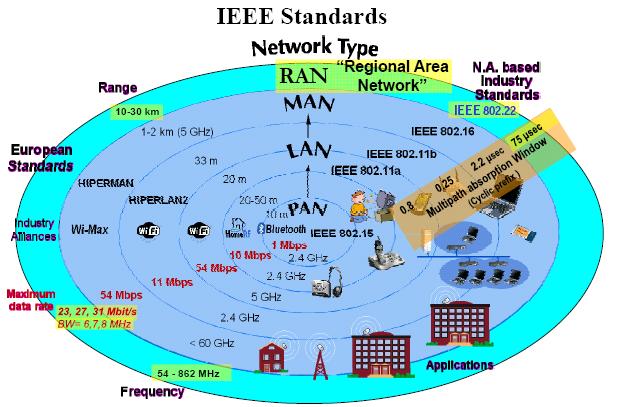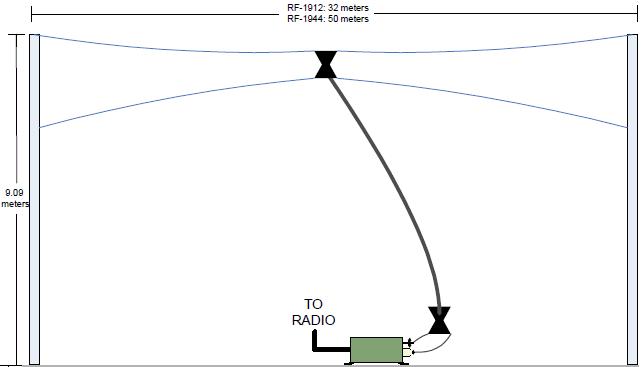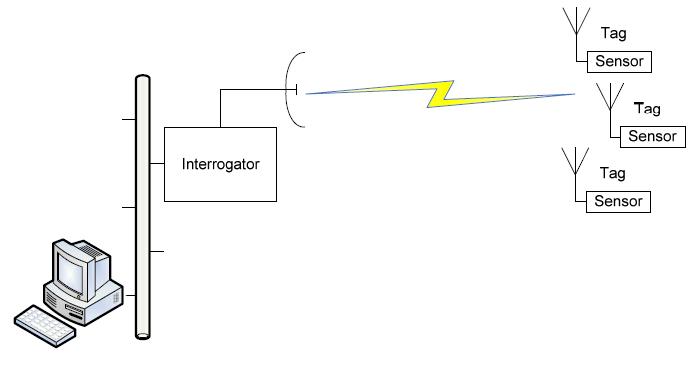Archive for the ‘Interference’ Category
Monday, April 20th, 2015
Interference arguments at the FCC would become more objective and less dependent on wordplay under a proposal by the FCC’s Technological Advisory Council (TAC).
Risk-informed interference assessment is a quantitative methodology intended to draw out the trade-offs between risks and benefits of new services. By using it interference assessments would move from, in the words of a TAC report, “What’s the worst that can happen?” to “What can happen, how likely is it, and what are the consequences?”
(more…)
Posted in Interference | 1 Comment »
Thursday, June 27th, 2013
The law firm of Fletcher, Heald & Hildreth has a post that’s unsettling to engineers such as I who don’t expect very different radio technologies on very different frequencies to interfere with one another.
It seems that 700 MHz base station receivers have become so sensitive they’re susceptible to 8th-order harmonic interference from FM broadcast stations. This is the case even though the FM transmitters meet FCC emission requirements. LTE receivers have become better than the FCC’s Rules.
The lawyers make several good arguments in support of the broadcasters. Unfortunately for the FM stations, Section 73.317(a) of the FCC’s Rules, which governs FM emissions, includes this provision: “. . . should harmful interference to other authorized stations occur, the licensee shall correct the problem promptly or cease operation.” We’re not lawyers, but that seems to be an overarching broad requirement that, until now, hasn’t been much of a concern.
These cases of interference are now being handled on an ad hoc basis, with some encouraging cooperation between broadcasters and the mobile industry. As mobile broadband receivers continue to improve and become even more sensitive, however, they will be even more susceptible to interference from FM harmonics. This should be looked at more formally by the FCC, perhaps in an inquiry or in a rulemaking proceeding.
Posted in FM Broadcasting, Interference, LTE | 1 Comment »
Sunday, January 27th, 2013
During the inauguration there were press reports of Jumbotron problems — pixelated video and distorted audio — at the Washington Monument.
Yesterday the Washington Post reported that the problems could have been due to “interference with a microwave signal” that brings video and audio to the Jumbotrons.
(more…)
Posted in 2200-2290, Audio, Interference, Video | 1 Comment »
Wednesday, July 18th, 2012
This summarizes a selection from 289 applications for the Experimental Radio Service received by the FCC during April, May, and June 2012. These are related to AM, high-frequency propagation, ultra-wideband, frequency-hopped VHF, managed access, small satellites, radar, MIMO, TV white space, low-power FM, stadium wireless service, GSM, and DTV. The descriptions are sorted by the lowest frequency found in the application.
(more…)
Posted in 4G, AM Broadcasting, Antennas, Aviation, CMRS, Cognitive Radio, Contraband Cell Phones, DTV, Dynamic Spectrum Access, Electronic Warfare, Equipment Authorization, Experimental, FCC, GSM, High Frequency, Interference, Jamming, Managed Access, Military, Mobile Broadband, Private Radio, Propagation, Radar, Satellite, Small Cells, Software Defined Radio, Space Communications, T-Mobile, TV Broadcasting, UAS, UAV, Ultra-wideband, Uncategorized, Unlicensed, White Space, Wi-Fi | No Comments »
Sunday, February 5th, 2012
This summarizes a selection from 215 applications for the Experimental Radio Service received by the FCC during October, November, and December 2011. These are related to AM broadcasting, FM broadcasting, spread spectrum on HF and VHF, unmanned aerial vehicle control, electronic warfare support, small satellites, white space technology, video production, managed access, TV interference, RFID, and radar. The descriptions are listed in order of the lowest frequency found in the application.
(more…)
Posted in AM Broadcasting, Amateur Radio, Antennas, Automotive, Aviation, Backhaul, Bluetooth, Boosters, Contraband Cell Phones, Dynamic Spectrum Access, Electronic Warfare, Experimental, FCC, FM Broadcasting, GPS, High Frequency, Interference, Managed Access, Maritime, Military, Millimeter-wave, Mobile Broadband, Modulation/Demodulation, Propagation, R&D, Radar, RFID, Satellite, Sensors, Space Communications, Spectrum, Telemetry, Terminals, TV Broadcasting, UAV, Unlicensed, White Space, Wi-Fi, WiMAX | No Comments »
Wednesday, July 27th, 2011
Comments are in on the FCC’s Notice of Proposed Rulemaking in WT Docket No. 10-4 to create new technical, operational, and coordination rules for wireless signal boosters in various services. These include the Commercial Mobile Radio Services (CMRS) that are covered by Part 22 (Cellular), Part 24 (Broadband PCS), and Part 27 (AWS & 700 MHz) of the FCC’s Rules. The services covered also include Part 90 (Land Mobile) and Part 95 (Personal Radio).
(more…)
Posted in 4G, Antennas, Automotive, Boosters, Broadband, CMRS, Cognitive Radio, Experimental, Femtocells, Interference, Private Radio, Wi-Fi | 2 Comments »
Monday, June 13th, 2011
This summarizes a selection of applications for the Experimental Radio Service received by the FCC during April and May 2011. These are related to TV white space, electromagnetic compatibility testing, train control, point-to-multipoint communications, satellite communications, radar, unmanned aerial vehicles, GPS, ultra-wideband, mobile satellite service, UMTS, mobile broadband picocells, wireless backhaul, and IEEE 802.11p. The descriptions are sorted by frequency.
(more…)
Posted in 4G, Automotive, Aviation, Backhaul, Cognitive Radio, Dynamic Spectrum Access, Experimental, IEEE 802, Infrastructure, Interference, Maritime, Military, Mobile Broadband, Picocells, Radar, Satellite, Software Defined Radio, Space Communications, Telemetry, UAV, Ultra-wideband, UMTS, Unlicensed, White Space, Wi-Fi | No Comments »
Saturday, May 14th, 2011
Recent contributions to the mobile broadband spectrum debate are reports from NAB and CTIA. I envisioned a “dueling reports” piece, but they mostly complement each other. Below I walk through the main points, adding some of my own views.
(more…)
Posted in 3GPP, 4G, Antennas, Backhaul, DTV, Femtocells, Infrastructure, Interference, LTE, LTE-Advanced, Mobile Broadband, Modulation/Demodulation, National Broadband Plan, NTIA, Picocells, Propagation, Spectrum, TV Broadcasting | No Comments »
Wednesday, April 13th, 2011
This summarizes a selection of applications for the Experimental Radio Service received by the FCC during March 2011. These are related to VHF propagation, satellite communications, TV white space, military communications, radar, software defined radio, aircraft broadband services, adaptive networks, peer-to-peer networks, intermodulation testing, unmanned aircraft systems, maritime broadband communications, border surveillance, target acquisition, and millimeter wave propagation. The applications are sorted by frequency.
(more…)
Posted in Ad-hoc Networks, Amateur Radio, Antennas, Aviation, Broadband, Cognitive Radio, Electronic Warfare, Experimental, Femtocells, FM Broadcasting, GSM, Interference, Intermodulation, Maritime, Military, Millimeter-wave, Peer-to-Peer, Picocells, Propagation, Public Safety, Radar, Satellite, Sensors, Software Defined Radio, Space Communications, Spectrum, Telemetry, Terminals, UAS, Video, White Space, Wi-Fi, WiMAX | No Comments »
Tuesday, March 15th, 2011
This summarizes a selection of applications for the Experimental Radio Service received by the FCC during February 2011. These are related to cognitive radio, land mobile, TV white space, unmanned aircraft systems, satellite terminals, ultra-wideband, wildlife tracking, interference detection, and radar. The descriptions are sorted by frequency.
(more…)
Posted in Automotive, Aviation, Cognitive Radio, Dynamic Spectrum Access, Electronic Warfare, Experimental, GPS, Interference, Land Mobile, Military, Millimeter-wave, Modulation/Demodulation, Public Safety, Radar, Radiolocation, Satellite, Telemetry, UAS, UAV, Ultra-wideband, White Space | No Comments »
Wednesday, March 2nd, 2011
To avoid interference, wireless transceivers can switch between transmit and receive on one frequency (Time Division Duplex (TDD)). Or, they can transmit and receive at the same time on different frequencies (Frequency Division Duplex (FDD)). There’s been a flurry of press reports about a new radio system, developed by Stanford researchers, that can operate full duplex on a single channel; that is, transmitting and receiving at the same time on the same frequency, something not done before.
(more…)
Posted in Antennas, Cognitive Radio, Hidden Node, IEEE 802, Interference, Latency, Modulation/Demodulation, Propagation, R&D, Spectrum | No Comments »
Thursday, September 23rd, 2010
The FCC finalized its white-space rules today, acting on petitions for reconsideration of its earlier decisions. It issued an 88-page Second Memorandum Opinion and Order that explains its decisions and includes the final white-space rules. A much-shorter press release was also issued.
At least one FCC observer has noted an uncharacteristic level of hype in today’s announcements. The FCC calls it “super Wi-Fi,” and adds the “potential uses of this spectrum are limited only by the imagination.”
Over two years ago, Google called it “Wi-Fi on Steroids.” It was later picked up by the popular press. Not all agree; it’s “Wi-Fi on Crutches” according to one who dares to consider the realities of physics and economics.
I’ll call it “Wi-Fi on Caffeine,” at least with respect to better range and coverage — if not data rates — compared with current Wi-Fi equipment. This is partly due to operation in the UHF-TV band instead of the 2.4 GHz band. In major markets and their suburbs, there will be few or no channels available for white space use. In rural areas and other less dense areas, the technology will be a good fit with Wireless Internet Service Providers (WISPs) and other longer-distance applications.
Cellular operators would like some of the white space on a licensed basis for backhaul in rural areas. They didn’t get it today, but the FCC is actively considering it and we may hear more on that by the end of the year. No way are all these vacant channels going to be occupied by internet services in the most rural areas, so the proposal of the operators makes sense.
In IEEE 802, Working Groups 802.22 and 802.11 are working on standards that can be used by equipment in these applications; 802.22 may be the one with longer range. Working Group 802.19 is trying to facilitate coexistence between the two. Now, there are asymetric interference effects, which is causing friction between the two groups beyond the normal competition. (802.22 takes the harder interference hit.)

There will be other standards and equipment as well. The white space concept is international, but unique to each area of the world.
Equipment is not easy; it’s challenging to develop sufficiently-broadband power amplifiers and antennas, and to meet the emission mask in a cost-effective manner.
Another challenge is developing a business plan when 120 MHz of TV spectrum could be taken away under the National Broadband Plan.
(more…)
Posted in Cognitive Radio, Interference, Regulatory, Spectrum, Standardization, Unlicensed, White Space, Wi-Fi, Wireless | No Comments »
Thursday, September 2nd, 2010
The FCC recently issued an order denying reconsideration petitions in its ultra-wideband (UWB) proceeding. That effectively ends the 12-year UWB rulemaking process. Mitchell Lazarus recounts how UWB became bogged down at the FCC and in a failed standardization attempt in IEEE 802.
UWB, as authorized by the FCC, operates across 3.1 to 10.6 GHz, with very low power at any one frequency; its tendency to cause or receive interference is very low.
IEEE 802 attempted to create a UWB standard in IEEE 802.15.3a but did not, as neither of two competing proposals reached the necessary voting threshold for approval. One of the competing proposals, Multi-band Orthogonal Frequency Division Multiplexing (MB-OFDM), has since seen some consumer success in Wireless USB, which is based on a platform maintained by the WiMedia Alliance; data rates are up to 480 Mbps at a range of about 10 feet.
UWB was eventually standardized in IEEE 802.15.4a, where it exists as an alternative physical-layer to standard IEEE 802.15.4-2006, a standard for very low power, low data rate devices. (The IEEE 802.15.3 family is for higher data rates with higher power consumption.) It uses what was the other competing proposal in 802.15.3a, Direct Sequence UWB (DS-UWB). This standardized form of UWB has been commercialized for asset tracking and other location services, but not yet for consumer applications.
(more…)
Posted in DTV, Interference, Location, M2M, Military, Millimeter-wave, Regulatory, Spectrum, Standardization, Ultra-wideband, Unlicensed, Wireless | 1 Comment »
Saturday, August 14th, 2010
This summarizes a selection of applications for the Experimental Radio Service received by the FCC during July 2010. These are related to high-frequency data, military communications, environmental data collection, synthetic aperture radar, WiMAX, sensor networks, interference-resistant communications, LTE, rail transportation, air traffic control, white space networks, and RFID.
- Harris filed an application (with supporting exhibits) for experimental license to operate on various frequencies between 3 and 15 MHz to test an experimental high-frequency wideband waveform that is intended to operate at either 12 kHz bandwidth or 24 kHz bandwidth to allow faster data transfer via high-frequency communications.

- Harris also filed an application (with supporting exhibit) for experimental license to operate on 4.94-4.99 GHz in support of development of US Army’s Warfighter Information Network: Tactical (WIN-T) and Future Combat Systems (FCS) programs. Equipment is to consist of the HNRe2 Highband Network Radio, manufactured by Harris. Harris says the HNRe2 is comprised of four elements: 1) the Baseband Processing Unit, 2) the Highband RF Unit (HRFU), 3) an Inertial Navigation Unit (INU), and a GPS device. The HRFU further consists of an upconverter, a High-Powered Amplifier (HPA), a Switched Beam Antenna (SBA), a Low-Noise Amplifier (LNA), and a downconverter). The test network will consist of five fixed nodes and one mobile node. The FCC has asked Harris to justify extended testing in a band that is primarily allocated for non-government public safety use.
- Canon U.S.A. filed an application (with supporting exhibits) for special temporary authority to operate wireless devices in support of a private technology and product exhibition from September 1, 2010 through September 3, 2010 at the Jacob K. Javits Convention Center in New York, NY. Canon is planning to import many wireless devices from Japan to be used with displays during the exhibition. These devices are not FCC compliant and not expected to be FCC compliant until after the exhibition. Frequencies requested include 315.0-315.7 MHz, 2.40-2.50 GHz, 5.18-5.67 GHz, and 61.6-62.5 GHz. This application was granted on August 11.
(more…)
Posted in Amateur Radio, Antennas, Aviation, Experimental, GPS, High Frequency, Infrastructure, Interference, LTE, M2M, Military, Millimeter-wave, Modulation/Demodulation, Public Safety, Radar, RFID, Satellite, Sensors, Telemetry, White Space, WiMAX, Wireless | No Comments »
Thursday, June 3rd, 2010
This summarizes a selection of applications for the Experimental Radio Service received by the FCC during May 2010. These are related to WiMAX, sensors, SAW devices, radio-location, ultra-wideband, white space, aircraft passenger communications, landslide monitoring, collision avoidance radar, mobile DTV, LTE, Inmarsat handsets, highway rock-fall monitoring, HF communications, spacecraft link characterization, and interference into broadband access.
- Polytechnic Institute of NYU filed an application (with supporting exhibit) for experimental license to conduct a network research project using WiMAX on 2535-2540 MHz. This is part of the nationwide Global Environment for Network Innovations (GENI) project, a suite of infrastructure that will support experimental research in network science and engineering. GENI is supported by the National Science Foundation and managed by the GENI Project Office at BBN Technologies.
- Mnemonics, Inc. filed an application (with supporting exhibits) for experimental license to operate in support of a research project that is to develop and demonstrate the viability of wirelessly extracting measured data from a network of passive surface acoustic wave (SAW) sensor devices. This sensing technique is said to have several advantages over existing sensors, including no wired connections needed to extract data, no power requirements, operation up to 1000 degrees C., and sensor cost in-quantity in the tens of cents each. Operation will be on 915 MHz.

(more…)
Posted in Aviation, Business, DTV, Experimental, High Frequency, Interference, LTE, Military, Millimeter-wave, Public Safety, Radar, Radiolocation, Satellite, SAW, Sensors, Space Communications, Ultra-wideband | No Comments »

